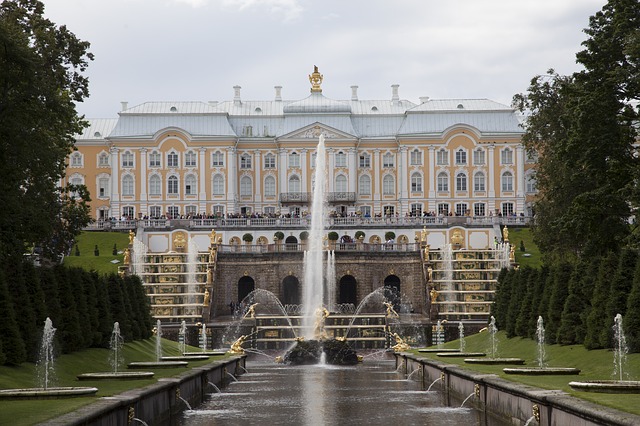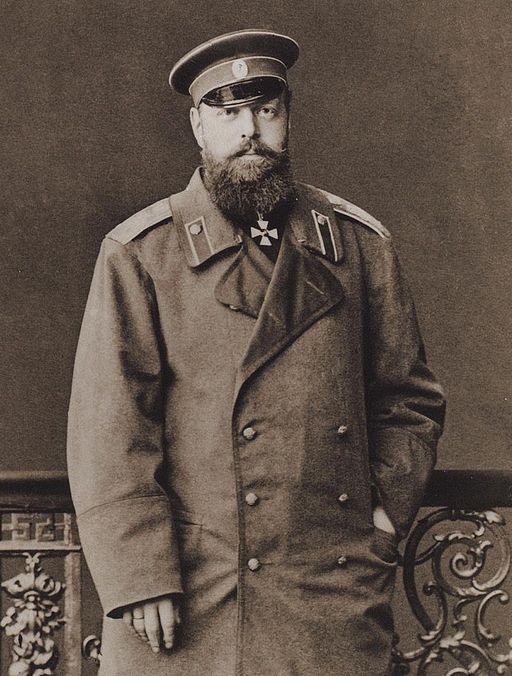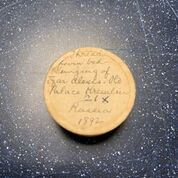- Date Acquired: 1892
- Place Acquired: Grand Palace, Peterhof, St. Petersburg, Russia
- Coordinates: 59°52’59.99″ N 29°53’59.99″ E
Between the years 1891 and 1892, Russia experienced a severe drought and crop failure in the black soil territory, a typically extremely fertile and fruitful region of Russia, which resulted in a great famine. A relief commission was formed by the Northwestern Miller in response, considering the fact that the U.S. had seen an extreme surplus of crops that year. The Northwestern Miller published a request for extra flour supplies to be donated to the relief for Russian peasants, At the time, General Reeve was the proprietor of the Holly mill and treasurer of the Millers & Manufacturers Insurance Co. in Minneapolis. Reeve was appointed to a relief commission by Governor Merriam of Minnesota and was put in charge of organizing the flour contributions from Minnesota and Nebraska. He later accompanied the shipment of flour to Russia along with the editor of the Northwestern Miller and the commissioner, Mr. E. J. Phelps aboard the Missouri. During his stay in Russia, Reeve visited the Peterhof Palace in St. Petersburg and obtained his “souvenir” from the drapes of Tsar Alexander III’s bed.
The Peterhof Palace is a palace complex, also known as “the Russian Versailles” due to its extravagance and its intricate garden and fountain system. Peter the Great had established St. Petersburg as the official residence of the monarch and desired to build a palace which would portray Russia’s international abilities to European nations. Therefore, the Peterhof was constructed along the shore, with access to open waters as a symbol of the contentedness of Russia and other major world powers. After the death of Peter the Great, his daughter, Empress Elizabeth, expanded the Peterhof, installed the famous system of fountains, and commissioned the construction of the Grand Palace. As the official residence of the imperial family, the Grand Palace has a lavish interior, designed by Bartolomeo Francesco Rastrelli, with a combination of Baroque, Neoclassical, and Late Rococo architectural styles. The palace today is almost entirely a reconstruction due to its destruction during World War II.
Alexander III was a conservative ruler who rejected the liberalism of his father, Alexander II. He is most well known for his traditional sense of morality and duty and his aspiration of maintaining a traditional Russian lifestyle. He was anti-Semitic and anti-German and intimidating in nature standing at 6 feet and 4 inches. Alexander III ruled from 1881 to 1894. He tended to favor the interests of Russian nobility over the interests of the lower class and desired to fill administrative positions with Russians as opposed to his father who had people from across Europe, mostly Germany, working in the Russian government. His conservative policies toward economy were focused on reducing the national deficit and consisted of higher taxes on imported goods and an increased exportation of goods. While this economic plan seemed to be successful at first, the higher taxes, increased exportation of grain, and a low crop yield for the year resulted in the Great Famine of 1891-1892.

miranviz. 2016. pixabay.com. https://pixabay.com/photos/st-peterburg-russia-peterhof-2078208/

Tsar Alexander III. 2013. Wikimedia Commons. https://commons.wikimedia.org/wiki/File:Tsar_Alexander_III.JPG#filehistory
For Further Reading:
- “Grand Palace.” SaintPetersburg.com. saint-petersburg.com/peterhof/grand-palace/
- Edgar, William Cromwell. 1893. The Russian famine of 1891 and 1892: some particulars of the relief sent to the destitute peasants by the millers of America in the steamship Missouri: a brief history of the movement, a description of the relief commissioners’ visit to Russia, and a list of subscribers to the fund. (Version digitized by Google). Minneapolis: Millers & Manufacturers Insurance Co. https://babel.hathitrust.org/cgi/pt?id=njp.32101074177997&view=1up&seq=9
- Etty, John. 2008. “Alexander III, Tsar of Russia 1881-1889: John Etty Assesses the historical significance of one of the lesser known Tsars.” History Review, 60.
- Johnson, Eric M. 2015. “Demographics, Inequality, and Entitlements in the Russian Famine of 1891.” The Slavonic and East European Review, 93, no.1: 96-119.
- Thackeray, Frank W., and Findling, John E.. 2012. “The Emancipation of the Russian Serfs, 1861: Alexander III, Tsar of Russia (1845-1894).” In Events That Formed the Modern World : From the European Renaissance to the War on Terror. Santa Barbara: ABC-CLIO, LLC. ProQuest Ebook Central.

